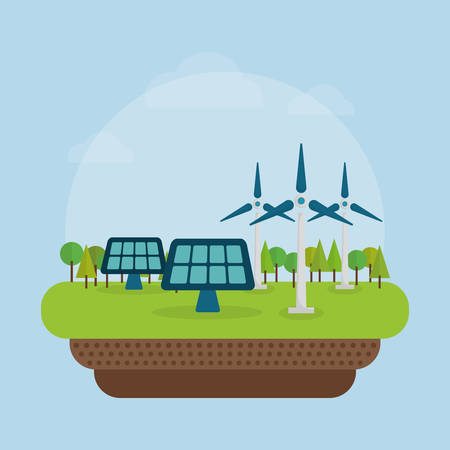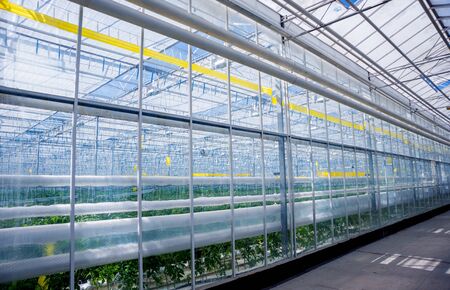Assessing Your Current Setup
Before jumping into a bigger indoor hydroponic operation, it’s essential to take a close look at what you already have. Start by evaluating your existing hydroponic system—what’s working well and what’s holding you back? Is your current setup producing the yields you want, or are there consistent bottlenecks like weak lighting, insufficient airflow, or nutrient imbalances? Next, measure your available space. Whether you’re growing in a basement, spare room, or garage, make sure there’s enough square footage for expansion, and consider ceiling height and access to utilities like water and electricity. Don’t overlook your resources either: Do you have the budget for upgrades? Are you able to dedicate more time each week as your garden grows? By honestly assessing your equipment, space, and resources right now, you’ll build a solid foundation for scaling up smartly—instead of running into headaches down the road.
Optimizing Lighting and Environmental Controls
When scaling up your indoor hydroponic system for higher yields, fine-tuning your lighting and environmental controls is non-negotiable. As you move from a small setup to a larger operation, the demands on your equipment increase significantly. Upgrading your grow lights and managing temperature, humidity, and airflow can make or break your harvests.
Upgrading Grow Lights for Larger Systems
Larger plant counts require more intense and even light coverage. Standard shop LEDs or fluorescent fixtures might cut it for a hobby project, but scaling up means investing in professional-grade lighting. High-efficiency LED panels or HID (High-Intensity Discharge) lights are popular in the U.S. for their ability to deliver consistent PAR (Photosynthetically Active Radiation) output. Here’s a quick comparison:
| Light Type | Coverage Area (sq ft) | Energy Efficiency | Initial Cost | Heat Output |
|---|---|---|---|---|
| LED Panel | 4×4 | High | High | Low |
| HID (HPS/MH) | 4×4 | Medium | Medium | High |
| Fluorescent (T5/T8) | 2×4 | Low-Med | Low | Low-Med |
If your goal is to maximize yield per square foot, opt for full-spectrum LEDs—they offer lower long-term costs and less heat stress for plants. Always match your lighting schedule and intensity to your crop’s growth stage.
Dialing in Temperature, Humidity, and Airflow
Bigger systems generate more heat and humidity due to increased plant transpiration and light output. It’s essential to maintain optimal ranges:
- Temperature: 68–75°F during the day, a few degrees cooler at night.
- Humidity: 50–70% for seedlings, 40–60% for vegetative growth, 40–50% for flowering/fruiting.
- Airflow: Use oscillating fans to prevent hotspots and reduce disease risk.
Aim for stable conditions by upgrading to commercial-grade thermostats, humidifiers/dehumidifiers, and inline duct fans as needed. Automate climate controls if possible—automation frees up your time and reduces errors.
The Bottom Line: Consistency Drives Yields
Your plants thrive when they get the right light at the right intensity, with stable temperatures and humidity throughout their life cycle. Invest in robust environmental controls early; it’s one of the best ways to ensure bigger harvests as you scale up your hydroponic operation.

3. Expanding Your Grow Space
Scaling up your indoor hydroponic system starts with increasing your available grow space. Whether you’re running out of room on your kitchen counter or you want to turn a hobby into a side hustle, getting creative with your cultivation area is key. Here are some practical strategies American growers use to maximize every square foot and boost their yields.
Shelving Solutions for Vertical Growth
If you’re limited on floor space, think vertical. Multi-tiered shelving racks can double or even triple your plant capacity without taking up extra real estate. Metal wire shelving, commonly found at home improvement stores like Home Depot or Lowe’s, works well for supporting grow trays and lighting. Make sure each tier has enough height clearance for your crops and LED lights, and consider wheels for mobility. Just remember: good airflow is crucial to prevent mold and disease, so leave enough space between shelves for circulation.
Utilizing Spare Rooms and Garages
Don’t overlook underused spaces in your house. An empty guest bedroom, basement corner, or clean garage can be transformed into a productive indoor farm. For garages, insulation may be necessary to maintain stable temperatures year-round—especially in areas with harsh winters or hot summers. Portable grow tents are another popular option; they help contain humidity, light, and pests while fitting neatly into odd-shaped rooms or tight corners.
Adapting American Home Layouts
Many U.S. homes have laundry rooms, mudrooms, or large closets that can be converted for hydroponic use. These spots often have easy access to water and electricity—two essentials for any hydro setup. If you rent, look for modular systems that don’t require permanent changes to the property.
Safety and Accessibility Tips
As you expand, keep safety in mind: secure heavy shelving to studs in the wall, check electrical loads before plugging in multiple lights and pumps, and ensure easy access for regular maintenance. A well-organized grow space not only supports healthy plants but also makes harvesting and troubleshooting much easier down the line.
4. Upgrading Nutrient Delivery and Reservoirs
When your hydroponic setup starts to outgrow its original footprint, upgrading your water and nutrient delivery systems becomes essential for maximizing efficiency and yield. Scaling up isn’t just about adding more plants; it’s about making sure every plant gets the right amount of nutrients and water at the right time.
Why Upgrade Your Reservoir and Delivery System?
Larger systems mean greater demand for water and nutrients. Small reservoirs may run dry too quickly, causing fluctuations that can stress your plants. A bigger reservoir helps maintain stable temperatures and consistent nutrient concentrations, reducing maintenance and giving your crops what they need to thrive.
Key Components to Upgrade
| Component | Upgrade Suggestion | Benefits |
|---|---|---|
| Reservoir Size | Upgrade to 20-50+ gallon tanks | Fewer refills, more stable environment |
| Pumps | Move to higher-capacity, durable pumps | Even distribution across larger systems |
| Nutrient Delivery Lines | Larger diameter tubing, multiple lines | Prevents clogging, supports more plants |
| Automation Controls | Add timers or smart controllers | Reduces labor, increases precision |
The Power of Automation in Large-Scale Hydroponics
If you’re serious about scaling up, automation is a game changer. Automated dosing systems mix and deliver nutrients on schedule, while water level sensors alert you before problems arise. These investments save time, reduce human error, and keep your plants growing strong—even if you’re away for a weekend or busy with other farm chores.
Pro Tip: Regular Maintenance is Key
No matter how advanced your system is, regular cleaning of reservoirs and flushing of delivery lines will prevent buildup and blockages. Set a maintenance schedule that fits your operation—weekly checks work well for most commercial growers.
5. Integrating Automation and Monitoring
If you’re serious about scaling up your indoor hydroponic system for higher yields, automation and monitoring tools are your best friends. As your grow space expands, manually checking every nutrient level, light cycle, or water pump gets overwhelming—and mistakes can become costly. Incorporating tools like timers, sensors, and remote monitors not only reduces the daily grind but also helps you catch problems before they turn into full-blown disasters.
Smart Timers for Consistency
Set-and-forget timers are a game changer for lighting and irrigation schedules. They keep your plants on a precise routine—no more missed feedings or light cycles because you got busy or forgot. In the U.S., you’ll find plenty of reliable digital timers that can handle multiple outlets, perfect for managing expanded systems.
Sensors: Your Extra Set of Eyes
Installing pH, EC (electrical conductivity), and temperature sensors means you’ll always know what’s happening in your system—even if you’re not physically there. These devices provide real-time data and alerts if levels drift outside your chosen range. It’s like having a farmhand watching over your crops 24/7, which is invaluable when scaling up.
Remote Monitoring for Peace of Mind
With Wi-Fi-enabled controllers and apps, you can check on your hydroponic system from anywhere—your couch, the office, or even while traveling. Some platforms send push notifications straight to your phone if something goes wrong. This peace of mind lets you focus on strategic decisions rather than day-to-day troubleshooting.
When you automate routine tasks and monitor key metrics in real time, you free up energy to focus on optimizing yields and expanding further. The upfront investment pays off by reducing labor costs, minimizing risks, and supporting consistent harvests as you scale.
6. Managing Costs and Maximizing ROI
Scaling up your indoor hydroponic system can lead to impressive yields, but it also comes with increased costs and financial risks. To ensure your expansion pays off, start by creating a detailed budget that covers every aspect of the upgrade—from equipment and lighting to nutrient solutions and labor. Don’t overlook hidden expenses like utility bills or replacement parts; these can add up quickly in a larger operation.
Track all your expenses closely using a spreadsheet or budgeting app. This helps you identify any areas where costs are creeping higher than expected. Regular expense tracking also allows you to spot trends over time, so you can adjust your approach before small issues become big problems.
To make your system more cost-effective as you scale up, look for bulk purchasing options for seeds, nutrients, and media—many U.S. suppliers offer significant discounts when buying in larger quantities. Consider investing in energy-efficient LED grow lights and automated climate controls, which may have higher upfront costs but will save money in the long run through lower utility bills and improved crop consistency.
Don’t forget to calculate your potential return on investment (ROI) by weighing your projected yield increases against the total costs of expansion. If possible, talk with local growers or join online hydroponics forums to get real-world insights about what works best in the American market. By managing costs carefully and always seeking ways to increase efficiency, you’ll position your hydroponic business for sustainable growth and stronger profits.


